Leukemia constitutes 35% of childhood cancer cases and ranks first. Leukemias are divided into 2 main groups according to the cell type: ALL (Acute Lymphoblastic Leukemia) and AML (Acute Myeloblastic Leukemia). Subclasses can also be defined within themselves. In Turkey, 1200-1500 new cases of leukemia are reported each year under the age of 16.
The causes of leukemia have not yet been fully elucidated. With the new developments in cytogenetic and molecular techniques, genetic predispositions, radiation, benzene and its derivatives (bali, etc.), chemicals such as pesticides, some hereditary diseases and some viral diseases have all been shown to cause leukemia. Leukemia can occur at any age. It most commonly increases in childhood at the age of 2-5 years. Response to treatment decreases in new cases below 1 year of age and above 10 years of age.
With the change in the code that occurs in the main cells in our bone marrow, which is the main production site of the blood circulating in our veins, with any effect, an increase in the immature blood cells we call blast occurs. These cells spread rapidly and involve the bone marrow, lymph nodes, spleen, liver, brain and central nervous system.
The causes of leukemia have not yet been fully elucidated. With the new developments in cytogenetic and molecular techniques, genetic predispositions, radiation, benzene and its derivatives (bali, etc.), chemicals such as pesticides, some hereditary diseases and some viral diseases have all been shown to cause leukemia. Leukemia can occur at any age. It most commonly increases in childhood at the age of 2-5 years. Response to treatment decreases in new cases below 1 year of age and above 10 years of age.
With the change in the code that occurs in the main cells in our bone marrow, which is the main production site of the blood circulating in our veins, with any effect, an increase in the immature blood cells we call blast occurs. These cells spread rapidly and involve the bone marrow, lymph nodes, spleen, liver, brain and central nervous system.
Leukemia Symptoms
The first signs of leukemia in children are:
 |
Anorexia |
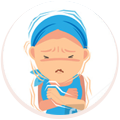 |
Anemia |
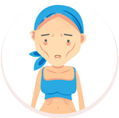 |
Weakening |
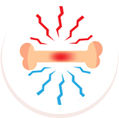 |
Bone Pains In The Legs |
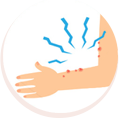 |
Bledings Under The Skin |
 |
Nose And Gingual Bledings |
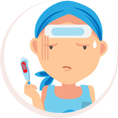 |
Fever |
|
In addition, symptoms of the organs to which it spreads, such as headache, vomiting, abdominal pain, visual disturbances, may be important. In the examination performed by the pediatric hematology (blood diseases) specialists to whom they apply with these complaints, liver and spleen enlargement, enlargement of the lymph nodes, and bleeding can be detected. A definitive diagnosis can be made as a result of blood, bone marrow, cell type determination and genetic tests. Detailed tests in the diagnosis will usually be helpful in determining the types of leukemia and treatment principles.
Treatment
Treatment first begins with the methods of correcting the general condition. At this stage, it is very important to take the blood or the special cells in the blood from the donors (voluntary blood donor) and give it to the patient with leukemia, to take necessary precautions if there is an infection, and to take precautions to protect the kidneys, liver and heart from the side effects of chemotherapy drugs. In addition, informing patients and families about the disease and explaining that leukemia is not hopeless, on the contrary, with good treatment and moral support, an improvement of up to 85% in leukemia is the second step of the treatment. Treatment Principles and Initial Treatment Ccedil is the intravenous and oral administration of at least 6 different types of drugs at a very high dose within 4-6 weeks. The aim here is to destroy the malignant mother cells called blasts. However, these chemotherapy drugs, unfortunately, do not only affect the bad cells, but also destroy the good and beneficial cells of our body. For this reason, our children's hair falls out, wounds appear in their mouths and intestines, and they become sluggish. Again, since the defense cells that protect our body against infections are destroyed by drugs, the immune system is destroyed, even the smallest microbe or disease agent spreads throughout the body and causes severe febrile infections. For this reason, our children with leukemia wear masks to avoid getting germs from the people, air and water around them and to be protected. |
